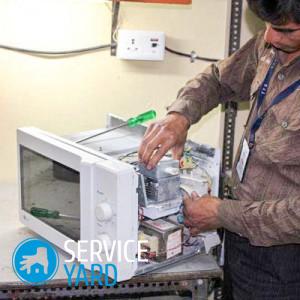Microwave Repair
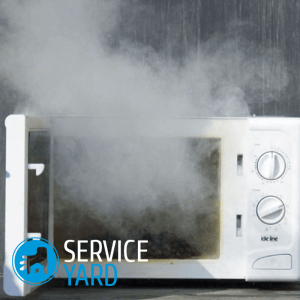
A microwave is a modern helper for many families. When it fails, then all members dream of quickly returning it to working form. Of course, if the microwave oven is under warranty, you just need to pack up and take it to a service center. But if the warranty period has long passed, then when contacting the master you will have to spend money. However, not every breakdown requires the intervention of a specialist, quite often the repair of microwave ovens is within the power of the owners of the equipment.
to contents ↑Just about a complicated device
In appearance, some users may have the impression that a microwave oven is a very complex device, but this is far from the case.
The main parts of the microwave:
- food heating chamber;
- waveguide;
- magnetron;
- power winding
- programmer;
- high voltage relay.
Important! Such a quick heating of food in the device is ensured by the fact that it uses twice the voltage. Therefore, repairs to microwave ovens should only be carried out:
- with appliances completely disconnected from the power supply;
- after forced discharge of the capacitor.
And even in this case, there may be a residual charge in the circuit.
Follow the link to find out why you need it. micas in the microwave and where is it.

Principle of operation:
- When the equipment is turned on, electricity is supplied to the primary winding of the transformer. As a rule, it is located below and consists of a copper wire, which, due to transparent insulation, many consider to be bare.
- At the same time, voltage is also supplied to the two secondary windings of the transformer. One of them is responsible for heating the cathode and is an ordinary wire, which is twisted in several turns. This winding is only 6.3 V. But the second winding is high-voltage, which is in good insulation, and the voltage in it is approximately 2 kV.
- A capacitor is placed at the output, a diode is connected in parallel to it. As a result, about 4 kV is removed from the transformer, which is enough to start the generation.
- Then the pulses are transmitted to the magnetron, which directly supplies the working energy to the food heating chamber.
- To control the duration of heating, a timer is used on the gears.
Important! Since the microwave is an increased source of danger, it has a whole security system, which includes a relay for protection against overvoltage and stopping operation when the door is opened.

Programmer
The microwave oven is arranged quite simply, so all processes are controlled by a mechanical programmer. Similar regulators, only a little more complicated, can be found in washing machines.
Inside the programmer are two cam discs:
- one of them supplies voltage to the transistor;
- the second is responsible for powering the quartz grill lamps.
It is easy to understand that in this way only the direct voltage supply in the microwave is regulated. But how to control power?
- The power of microwaves is regulated by alternating periods of work and rest. The less downtime, the greater the power released, and vice versa.
- Inside the programmer there is a timer, which consists of a gear or gear transmission - an analogue of the clockwork.
- After a certain period of time, the programmer closes or opens the circuit, thereby turning the transformer on or off, and through it the magnetron.
- In order to avoid piercing sparks during connection or disconnection of contacts, the electrical circuit in front of the transformer is supplemented with a control relay. It waits until the voltage rises to the required value on the control gate, and only then releases current into the circuit.
Important! The relay takes all the blow and prevents the appearance of a spark.The reliability of the microwave depends on the quality of its performance.
Classic microwave ovens work on this principle. In modern models, inverter control is often used - instead of a timer, the temperature measurement sensor manages the power of the magnetron. He decides how to operate the microwave oven based on the evaluation of the radiation spectrum of the food. In this case, the power is regulated not by downtime and work, but by creating pulses with the necessary parameters.
Important! Proper operation and maintenance of the microwave oven can extend the life of the appliance. Malfunctions can be caused by fat that settles on the walls of the device. Learn about the best ways "How to wash the microwave from fat inside at home?"
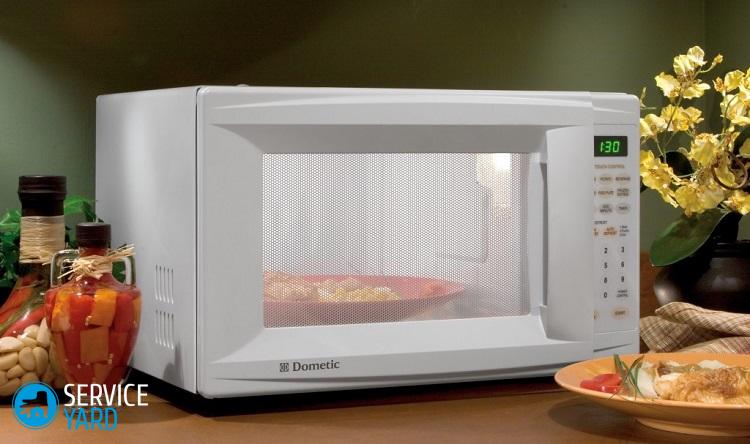
Safety relays
Talking about the structure of the microwave oven, one cannot fail to mention the protective mechanisms that ensure the safety of the use of equipment. Since the microwave oven is a high-risk device, if the door is opened during operation or just in standby mode, a complete shutdown of all processes provides several relays at the same time. Often, two of them break the circuit in phase and ground, while one relay “hedges” the other.
Here's how the protective microswitches work:
- With the door closed, the circuit is closed, the relay buttons are depressed.
- When opened, the chain should break twice.
- If the first relay does not work, then the second relay ensures the correct operation of the device, which also disconnected the contacts by that time.
- If both relays are stuck, then the fuse will be knocked out.
Important! When repairing the microwave oven with your own hands, note that this fuse is on the electronic board. Do not confuse it with a power fuse, which is mounted in the housing and is located under the magnetron.
With a small number of relays, the microwave oven requires constant monitoring, especially if there are children in the house. This technique does not have a protective mechanism against turning on an empty camera or in the presence of metal objects. In this case, the microwave oven can produce excessive power, which can lead not only to damage, but even a fire or explosion of the device.
Important! Here all hope is only for a power fuse, which estimates the energy consumption of the magnetron. In case of exceeding the norms, it should simply burn out to open the circuit and protect the generator.
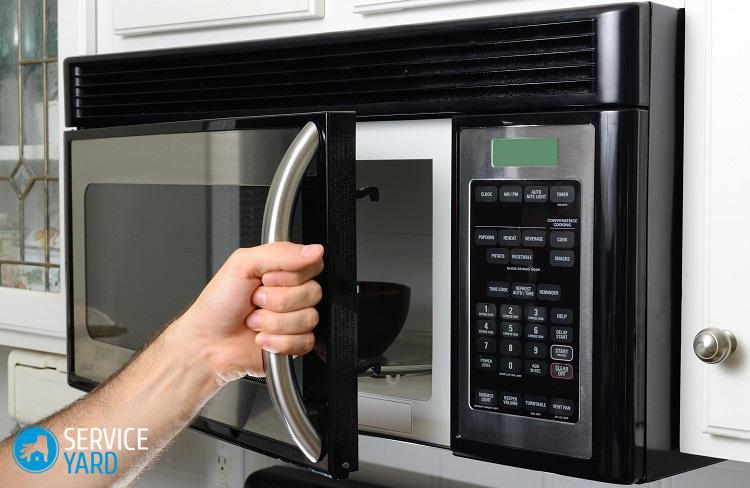
Additional Microwave Ovens
Service mechanisms of the microwave oven provide the convenience of using the equipment, but in no way affect the operation of the device itself. These include:
- fan motors;
- plate table motor;
- grill quartz lamps;
- backlight bulb.
As a rule, all these secondary mechanisms are connected in a serial circuit, therefore, when one of them fails, the others do not work. Repairing conventional microwave ovens in this case is simple. However, with modern devices with electronic control and inverter control will have to tinker.
to contents ↑Security measures
Before proceeding with the independent repair of the microwave oven, be sure to study the basic rules of this procedure and the use of the device:
- Under no circumstances should you turn on a magnetron that has been removed from its original location. Life threatening!
- Do not start the microwave if the fan malfunctions. This may cause the magnetron to malfunction.
- Never start the microwave when:
- open door;
- waveguide malfunctions;
- camera damage.
- Repair of the microwave oven can only be carried out after disconnecting from the mains and removing the accumulated voltage.
- All parts can only be replaced with similar, and preferably identical, original spare parts.
- When testing, you cannot turn on the device with an empty camera. At a minimum, place a non-metallic bowl of water.
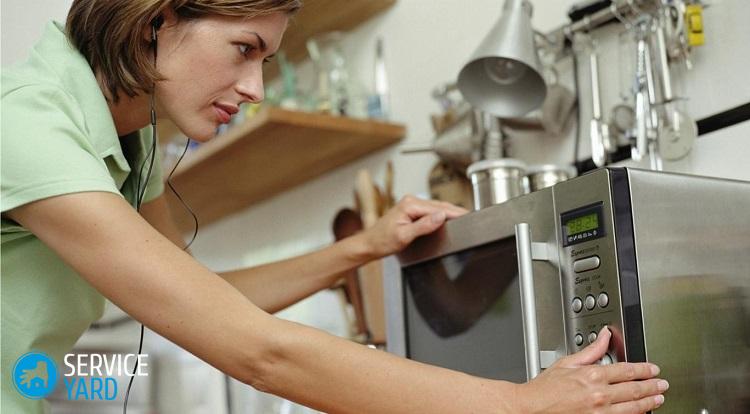
Basic Microwave Failures
Often the cause of the malfunction of certain mechanisms of microwave ovens is improper operation or transportation of the device. Most factory defects manifest themselves at the initial stages, so repairs occur during the warranty period and will be free. Consider the main symptoms of breakdowns and how to eliminate them.
The microwave does not show any “signs of life”
If the microwave oven does not react in any way to the door opening and to the control knobs, then the reasons should be diagnosed and the cause identified:
- Make sure that the line filter is receiving voltage. To do this, you first need to inspect the power cord for integrity, and then check with a multimeter. All three wires that go from the outlet to the terminal should be dialed. Also, the grounding terminal of the outlet must be dialed onto the body of the microwave oven.
- If everything is in order with the power cord, you should inspect the mains fuse. Most often it is located on the power filter circuit board. In the event of a malfunction of the mains fuse, repairing the microwave is quite simple - it just needs to be replaced with an identical one at face value.
Important! It should be understood that the fuse itself does not burn out - there must be a reason.
Visually inspect all the mechanisms of the microwave oven. The presence of drips, dark spots, holes from breakdowns - all this indicates a malfunction. Smell can also help in your searches: you may smell burning insulation or transformer oil - this will help to quickly identify a malfunction.
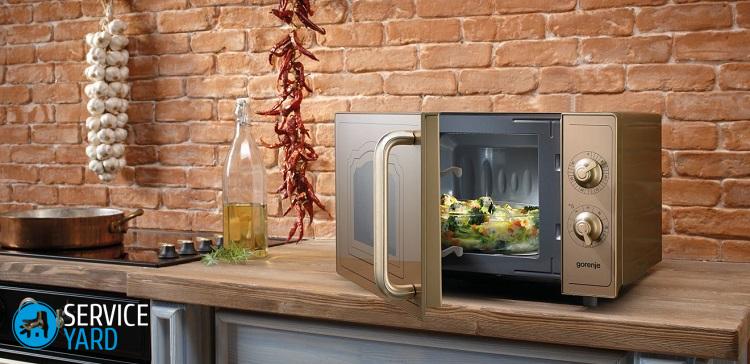
Service mechanisms work, but the microwave does not warm
If a light is on when the door is opened, a table rotates at startup, but the food does not heat up, this may be a sign of a malfunction of the main mechanism or magnetron circuit.
There is a separate review on our site in which we described what to do if the microwave is working but not warm.
First steps to diagnose
But before proceeding with the verification of these elements, you should first examine the camera and its details:
- The inner walls of the microwave oven must not have burnt holes, worn enamel or other defects.
- In the chamber on the left side there is a rectangular window-plate of radiolucent dielectric. It needs to be removed and considered.
- If the window is contaminated with food debris, wipe it with alcohol.
- If there are darkening or uncharacteristic holes on the plate, then:
- it must be replaced;
- this indicates improper use of the microwave oven, for example, a metal object was placed in the chamber or turned on without loading.
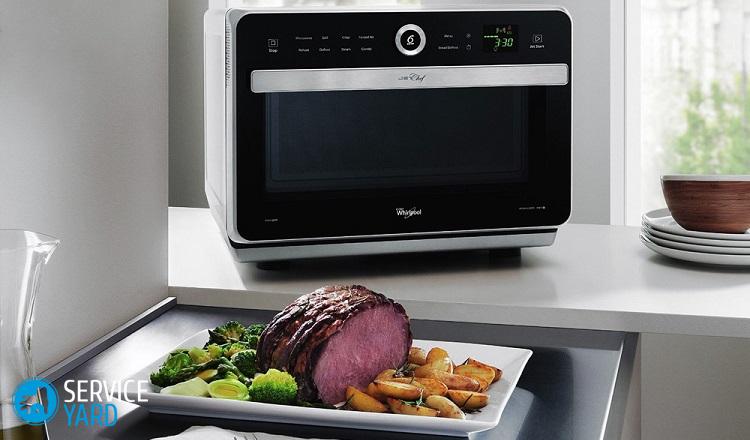
Then you should begin to study the high-voltage circuit. Pay special attention to such elements:
- power fuse (diode);
- transformer;
- capacitor;
- diode.
If before that there were metal or other unsuitable objects in the chamber, the safety diode most likely tripped. In this case, the entire repair of the microwave by yourself is reduced to replacing the damaged element. It is located near the capacitor and is enclosed in a box made of ceramic or another dielectric.
Important! Such a diode can only be replaced with a similar one, equal in nominal value to “native”. In no case can you make a power fuse yourself or exclude it from the circuit at all - this can lead to a fire in the microwave or personal injury.
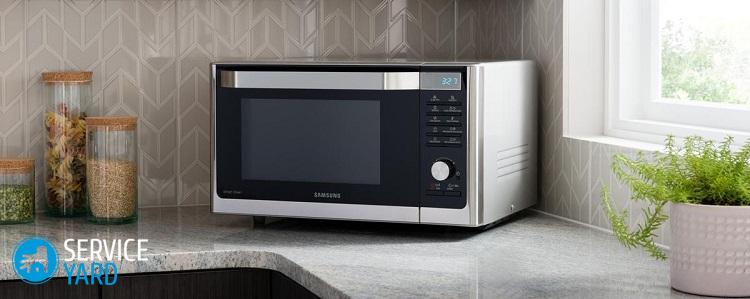
Capacitor, transformer
Also, a breakdown in the capacitor or diode may become the cause of the inclusion of a protective diode. Check these items before testing the microwave oven.
To exclude breakage of the transformer, you need to ring it with a multimeter. To do this, disconnect it from the load and the primary winding - just remove the corresponding terminals with pliers.
Important! The following resistance is considered normal:
- primary winding - 1.5 Ohms;
- high voltage (secondary) - 110-120 Ohms;
- secondary winding - 0.1 Ohm.
If at least one wiring is not ringing, the transformer should be replaced.
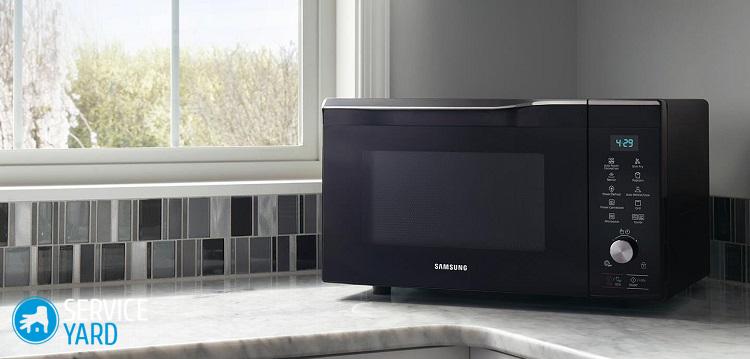
To check the capacitor, you can use a household low-power incandescent lamp, the desired parameters are 15 watts at 220 V:
- Disconnect the capacitor. Outwardly, it looks like a small tin can, one end of which is attached to the diode, and the other to the case.
- Connect the capacitor to the luminaire in series.
- Then plug this entire circuit into a power outlet.
- If the bulb shines half power, then the capacitor is working.
- If the lamp burns brightly or does not burn at all, the element is defective and should be replaced.
Important! In the same manner as the capacitor, the diode is also tested. If this element fails, then during the repair of the microwave oven it should be remembered that the new diode must be connected to the circuit just like the previous one. If you confuse the ends, the technique will not work.
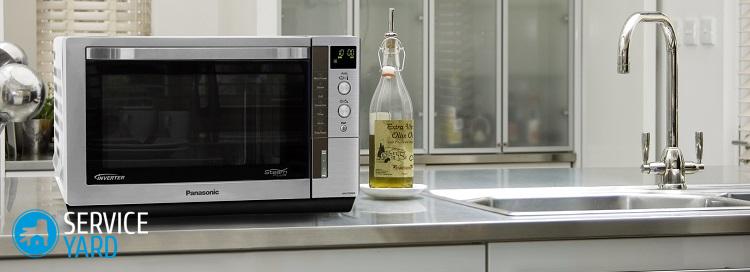
Magnetron
Another reason that the microwave oven does not heat may be the failure of its “heart” - the magnetron. To verify it:
- Disconnect the magnetron terminals from the transformer.
- If the terminals ring on the housing, then a breakdown of the passage capacitors in the filter has occurred. You can replace the filters or the entire capacitor assembly.
- If everything is ok with the terminals, remove the magnetron from its original position and evaluate the condition of the antenna cap. If it has damage or burnt spots, a replacement is needed.
Important! When repairing microwave ovens, if you need to replace the antenna cap, install only exactly the same size. There can be no other options!
- Also inspect the magnetron insulator.
- If the antenna or magnetron body is broken, its replacement is definitely needed. However, this is often economically disadvantageous.
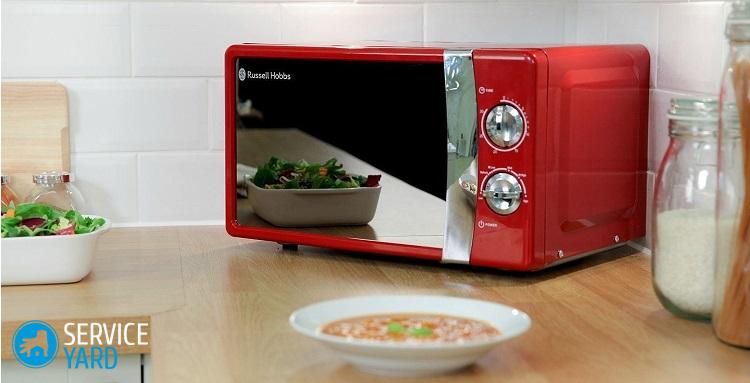
to contents ↑Important! Did you manage to fix the malfunctions yourself? Then it's time to eat! Prepare yourself a delicious meal, the recipes of which you can find on our portal in a separate article“What can I cook in the microwave?”
Faulty locking system and control unit
If all the basic elements of the microwave have been tested, but the device still does not work, the cause may be a malfunction of the door mechanism or control unit. Such breakdowns are quite rare, but they do happen.
Lock system testing
First you need to check the lock-bolt and the tightness of the door:
- Take a sheet of paper and insert it between the case and the door.
- Close the door.
- The paper must be jammed very tightly. In order to stretch it, it will be necessary to exert a sufficiently large force.
- Thus check the entire perimeter of the door.
- If in some places the paper is not jammed enough, then adjustment is needed. It is carried out both from the hinges and from the castle.
Then you need to check the microswitches. To do this, they are called by the tester with the door closed and open. If at least one of them is faulty, then everything should be replaced.
Important! Since the wear of these elements is approximately the same, when replacing one in the near future, you will have to gradually change the others.

Control unit malfunction
Many control cards have a separate fuse. If it burns out, then this may be the reason for the inoperability of your microwave oven:
- Remove the board and inspect it.
- If the fuse is blown, then it should be replaced with a new one.
- Damage to the tracks, the presence of burning or bloating of capacitors - all this indicates problems in the control unit. In some cases, something can be re-soldered, and sometimes a complete replacement is required. Since each board has its own individual circuit, there are no points in considering possible options for repairing a microwave in an article.
- If there is a suspicion that there is a malfunction in the power transformer, then first you need to remove it from the circuit and only then it will turn out to ring.
to contents ↑Important! If there is no point in repairing your microwave and there is a question about buying a new one, our separate post will help you choose the best model. To do this, follow the link "The best microwaves".
Stock footage
In conclusion, I want to say that most of the failures of microwave ovens are a consequence of improper use. As you can see, despite the fact that this technique has a fairly simple device, DIY repair of a microwave oven requires some knowledge of electrical engineering and compliance with safety rules.





